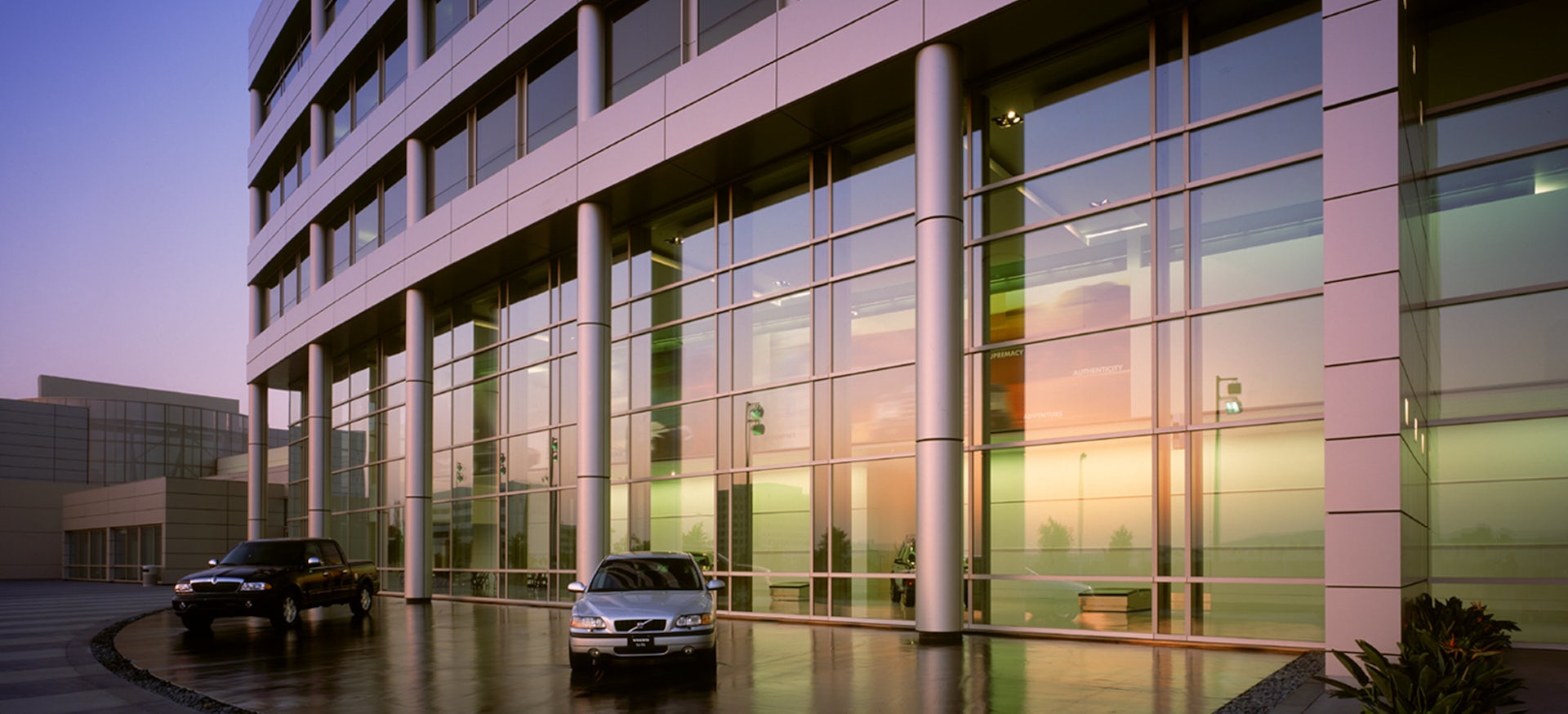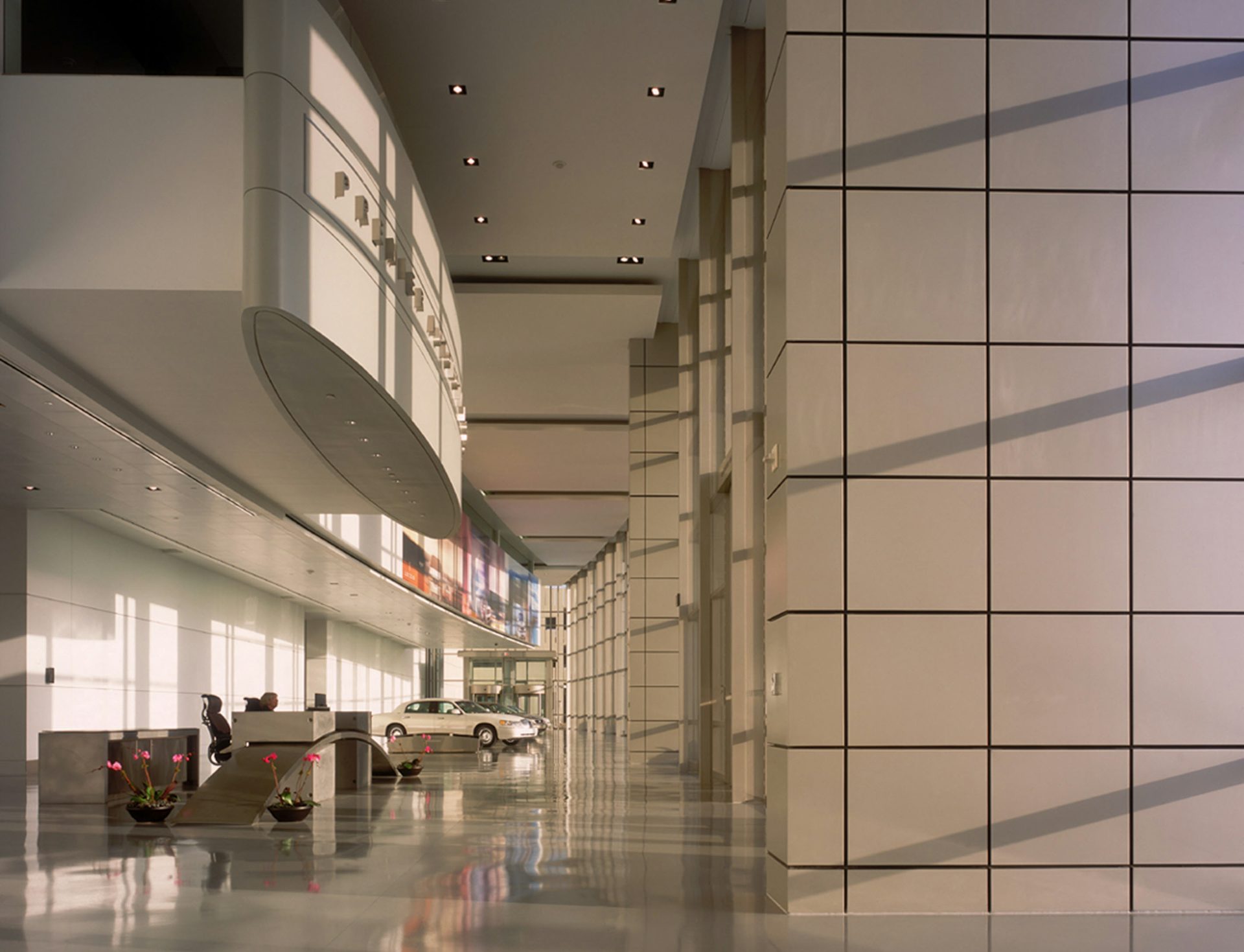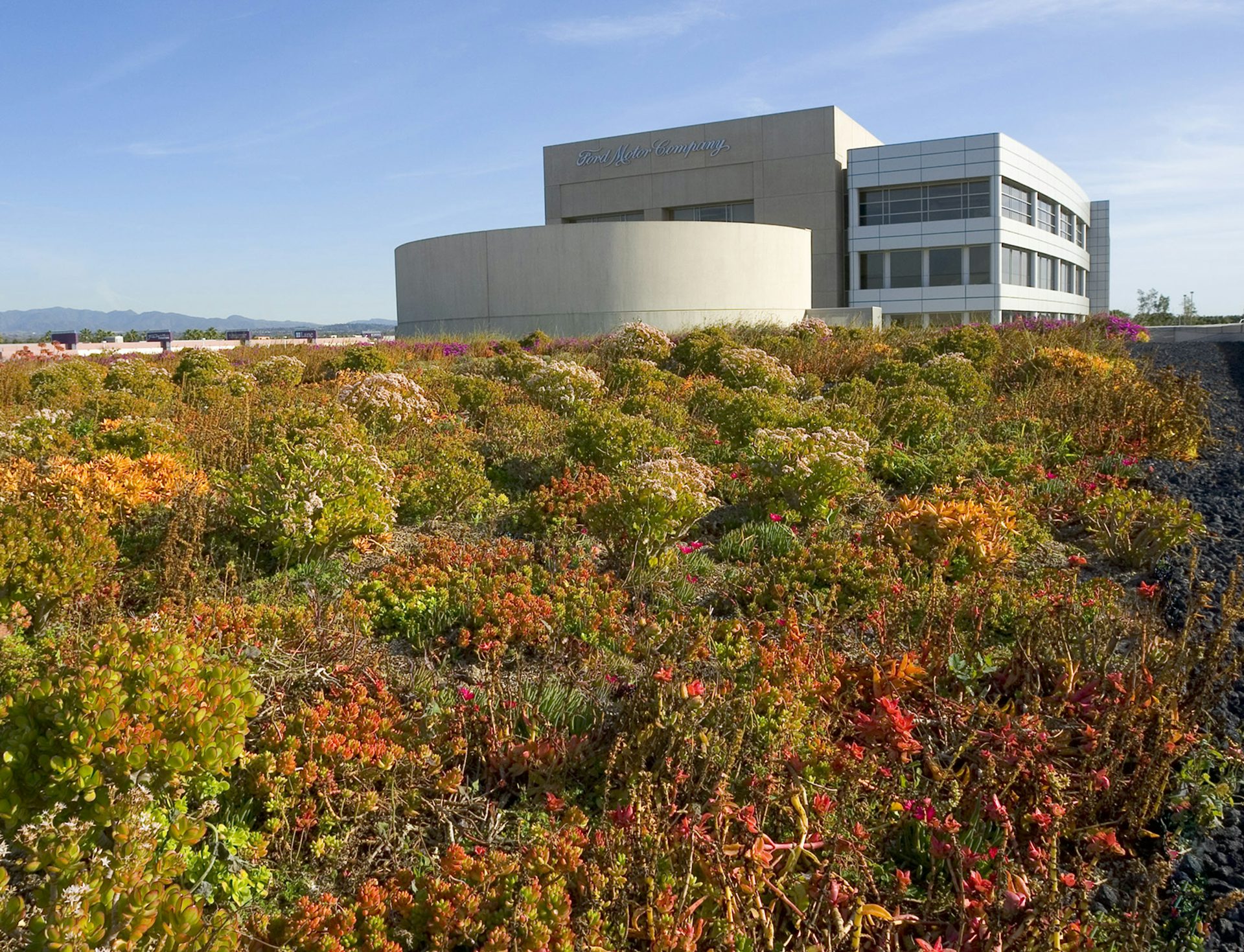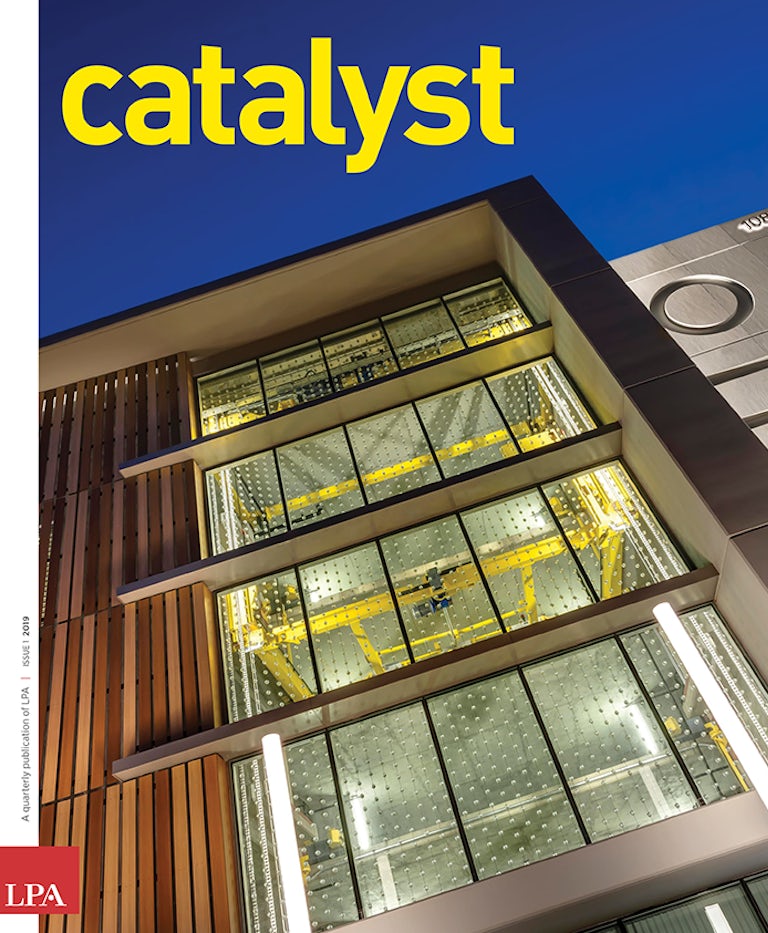Twenty years ago, I was part of the LPA team that designed the first LEED NC building in the country, the Premier Automotive Group (PAG) headquarters, in Irvine. At the time, the United States Green Building Council had only recently launched the LEED NC standard and it was uncertain if it would take hold or have any real impact on the design industry.
Looking back, we learned several lessons on that first building and it helped shape many of our approaches to design. In many ways, the design illustrated that sustainability and excellent design are not mutually exclusive, and LEED could play an important role in developing better projects.
For us, LEED was exactly what we wanted to hear in 1998, when we started the design of the PAG facility. We were looking for ways to better link sustainability and our core design goals, in a way that was both measurable and relevant to the client. LEED was a natural for us. When we heard details about the scorecard, it was like a light came on.
The conventional wisdom at the time was that LEED cost too much. Our position was that LEED was not only affordable, every element made perfect sense. It’s about building better for our clients — how can that not be the right thing to do? We decided our approach would be to find ways to help our clients make value decisions on the best ways to spend their money.
For the PAG headquarters, we were lucky to have a client, Bill Ford, chairman of the Ford Motor Group at the time, who wanted to make a strong environmental statement with the project. The project would be home to the national headquarters for the company’s five “premier” brands — Lincoln, Jaguar, Volvo, Aston Martin and Land Rover — including a five-story, 250,000-square-foot office tower, an 80,000-square-foot design center and a four-story parking garage.
The LPA team — including Rick D’Amato, Damon Dusterhoft and Denise Mendelssohn, who are still with LPA today — faced a wide array of challenges for meeting the new LEED standard for the project. The site was long and narrow and located in Spectrum Center, a planned business community next to a freeway. The site orientation was not ideal: the office tower’s main exposures are east and west and the guidelines for Spectrum didn’t allow for sunscreens or shading devices at the time. Lighting and HVAC technologies that are best practices today were unavailable at the time.
There were four key elements in the design that we considered big gestures toward meeting the LEED goal. The first was a 50,000-square-foot green roof on the design group building. Stormwater runoff is a big issue in California and the green roof was a way to reduce roof runoff, while providing a great visual element from the project office tower. We also used raised floors in the office tower, which at the time was the most efficient way to deliver HVAC and had the added benefit of creating a better indoor air environment for the users. The other core elements were additional landscaping provided with green screens around the parking garage and public areas, and the inclusion of an on-site energy source, in the form of a fuel cell system.
Today, we would have done many things differently. Traditional HVAC systems have improved dramatically to where energy savings are not achieved with raised floors. The fuel cell system didn’t really work; the project use and the technology wasn’t right at the time. In Southern California today, solar panels are a much better application for renewable on-site energy. Solar panels are 50 percent less expensive than they were in 2000 and can have very attractive paybacks using tax credits that were not available at the time as well.
But many of the strategies we used on PAG are still part of our core toolkit. It started with how we approached the simple footprint and maximized opportunities for natural light. Careful selection of glass and materials helped shape the efficiency and aesthetic of the building. The green screens not only expanded the landscaped portions of the site, they provided strategic insulation and shading.
Elements such as the green roof and raised floor were more expensive, but we were able to find ways to offset the costs, including a very efficient Alucobond material for the skin of the buildings. The Alucobond skin extends beyond the glass line shading the glass while creating a sleek neutral skin that related to each of the five brands who occupied the building.
Ultimately, the most sustainable aspect of the project is its longevity. Ford’s design center is still on the site, but the company eventually vacated the main office building, which has been used by different Forbes 500 companies over the years. We designed the tower to be flexible with the location of exit stairs, bay depths and floor to floors to allow for future tenants. We created something special for Ford, but didn’t break the rules of a spec building and that’s proven to be really valuable to Ford over the years in leasing the building.
Today, I can look back at the PAG project and say it holds up pretty well. It exceeded California’s Title 24 energy efficiency standards by 25 percent. Ninety percent of the building’s occupants have access to views and natural daylight; 30 percent of the building was built from recycled materials. I think we were able to show that designing a LEED building wasn’t this onerous, impossible standard to meet as a demonstration project. The project also demonstrated LPA’s core belief that sustainability and design excellence are partners in the design process; it earned both an AIA Orange County and an AIA California Council Savings by Design award.
In many ways, the PAG project was a great benchmark. It was so early in the LEED process, it provided us a starting point and helped inform our future discussions, including the idea that designing for LEED was not simply about chasing LEED points. We decided, going forward, we would focus on three areas: energy use, water and water management, and healthy environments. If we did those three things right, we knew we would meet the LEED requirements, regardless of the point system. That remains our approach today.
Dan Heinfeld is President of LPA.
This story originally appeared in Catalyst Issue 1 2019. Subscribe today to receive Catalyst, a quarterly publication that takes a deep dive into design ideas, industry leaders and initiatives.

















